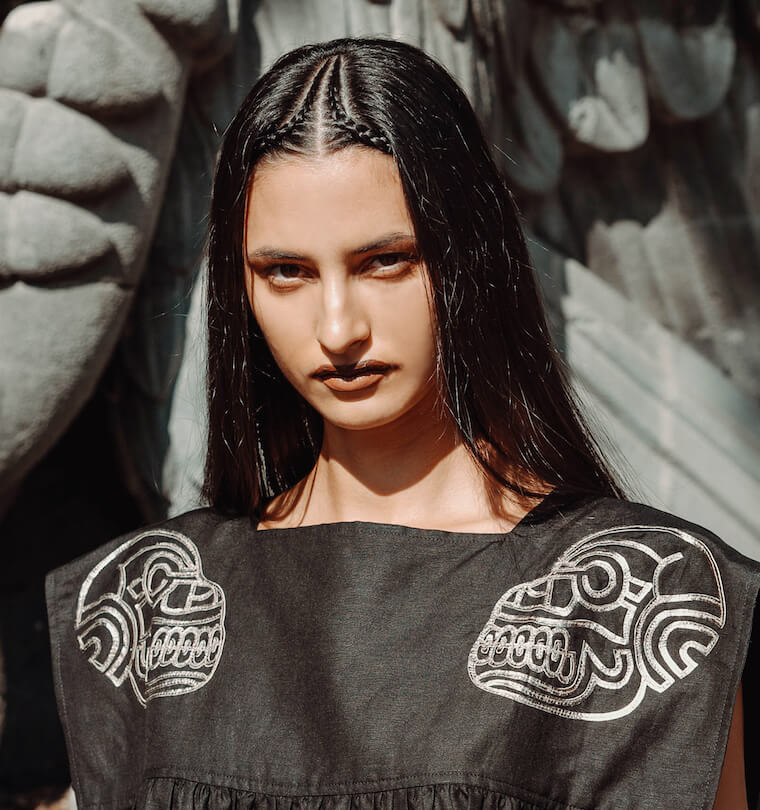Our Goddesses

Our Goddesses
The inspiration for this collection are the goddesses of ancient Mexico, given the incredibly rich tradition of femininity in the pre-Hispanic pantheon of divinity.
To speak of feminine deities in Pre Hispanic Mexico is to speak of duality; sun and moon, life and death, masculine and feminine. In our imaginary, at every moment we have present the complementary world, the balance between the dualities that surround us, in an extremely complex space that, in the end, has given us the possibility of keeping these traditions alive.
COATLICUE
The mother of the gods, goddess of the earth, who lived on the mountain ridges of Coatepec; mountain of the serpent. Her hands and feet are claw-shaped, she wears a skirt of woven snakes and her chest is covered with human skulls, hands and hearts. The goddess’ head is replaced by two serpent heads that face each other, simulating two streams of blood that sprout from her trun- cated neck.
COYOLXAUHQUI
Goddess of the moon in Aztec mythology. She was the daughter of the goddess of the earth, Coatlicue, and sister to the sun god, Huitzilopochtli. According to the myth Coyolxauhqui, infuriated by her suspicion that her mother, Coatlicue, was pregnant with a stranger’s baby (she had actually been impregnated by a ball of feathers fallen from the sky), asked her siblings to kill their progenitor to redeem the affront. This is how Coatlicue came to give birth to Huitzilopochtli, who emerged from his mother’s womb as an adult warrior, ready to defend his mother, conquering his siblings, beheading his sister and sending her head to the sky so that his mother could see it every night. Then Huitzilopochtli tossed his sister’s body down the mountain, dismembering it.
XOCHIQUÉTZAL
She is one of the most ancient Mesoamerican deities, the goddess of the Mexica lands, goddess of agriculture, love, beauty and all the arts; for this reason she is venerated as the goddess of weaving and spinning. Sometimes she is represented with a machete de telar (a shed stick for weaving), a nose piercing shaped like a butterfly and other orna- ments shaped like flowers and quetzal birds.
The illustrations are made by Emmanuel García, a fantastic pop illustrator an avid defender of pre-plotter and pre-digital aesthetics. Together we wanted to give the goddesses a aesthetic of heroines.
Our Goddesses
Categories
No products found in this collection.


